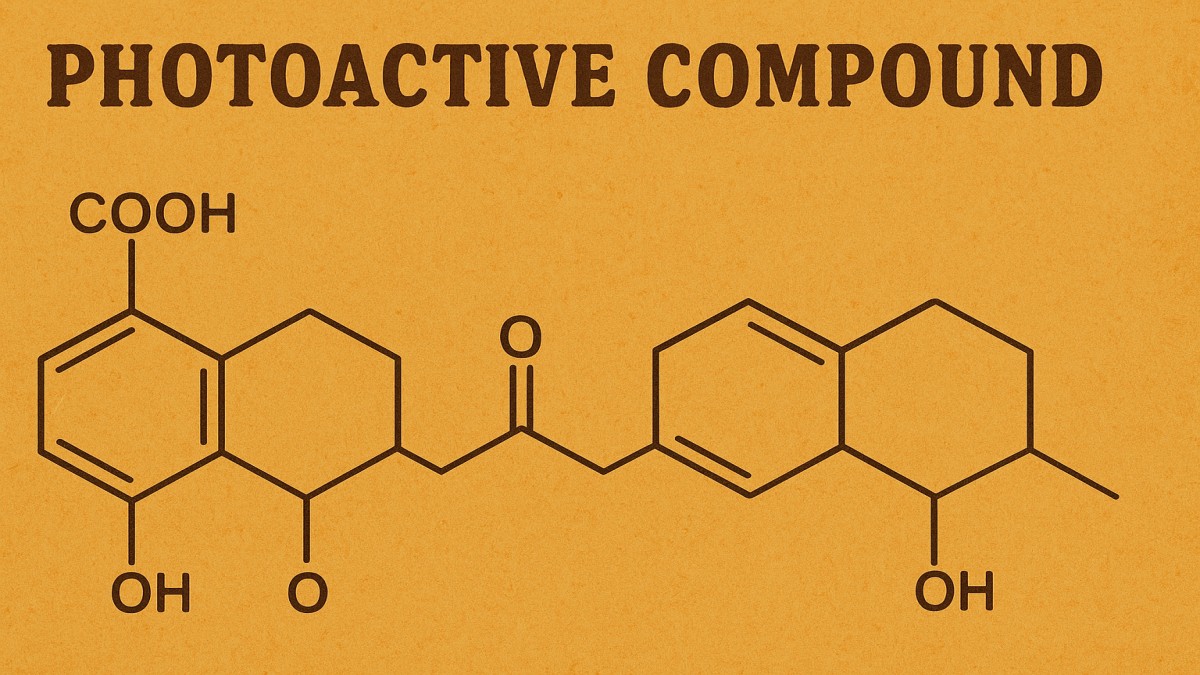Introduction to Photoactive Compounds
What is a Photoactive Compound?
A photoactive compound is a substance that changes its chemical or physical properties when exposed to light. This change is usually triggered by photons, which carry energy from a light source (natural or artificial). These compounds can absorb light energy and convert it into chemical reactions, making them incredibly valuable in multiple fields—from medicine to renewable energy.
Why Are They Important in Science and Industry?
Photoactive compounds are at the heart of many advanced technologies. They power solar panels, enable targeted cancer therapy, and even play a role in environmental cleanup. Without them, much of our modern photochemistry-based technology simply wouldn’t exist.
The Science Behind Photoactivity
Light Absorption and Electron Excitation
The process starts when a photoactive molecule absorbs a photon. This energy excites electrons to higher energy states. Depending on the compound, this can lead to chemical bond breaking, bond formation, or structural changes.
Photochemical vs Photophysical Processes
- Photochemical processes result in chemical changes, such as splitting water into hydrogen and oxygen.
- Photophysical processes involve changes in physical properties (like fluorescence) without altering the chemical structure.
Role of Molecular Structure in Photoactivity
The efficiency of photoactivity depends on molecular shape, electron distribution, and light wavelength compatibility. Conjugated double bonds, metal centers, and chromophores are common structural features.
Types of Photoactive Compounds
Organic Photoactive Compounds
Dyes and Pigments
These compounds absorb visible light to produce color. Organic dyes like methylene blue are widely used in textiles, imaging, and diagnostics.
Photosensitizers
Photosensitizers transfer absorbed light energy to surrounding molecules, triggering further reactions. They’re essential in photodynamic therapy and solar cells.
Inorganic Photoactive Compounds
Metal Complexes
Compounds like ruthenium bipyridyl absorb light efficiently and are used in artificial photosynthesis.
Semiconductor Materials
Titanium dioxide (TiO₂) is a well-known photoactive semiconductor used in self-cleaning glass and water purification.
Biological Photoactive Compounds
Chlorophyll and Photosynthesis
Chlorophyll in plants captures sunlight to drive photosynthesis, sustaining life on Earth.
Retinal in Vision
The protein-bound molecule retinal changes shape upon light absorption, initiating the visual process in animals.
Mechanisms of Action
Photocatalysis
A process where light activates a catalyst, accelerating a chemical reaction. TiO₂ photocatalysis is widely used for air purification.
Photoisomerization
This involves a change in the molecule’s geometry upon light exposure, like the cis-trans switching in retinal during vision.
Photodegradation
Here, light breaks down compounds—helpful for environmental cleanup but also a cause of material degradation.
Applications of Photoactive Compounds
In Solar Energy Conversion
Photoactive semiconductors are at the heart of photovoltaic cells, converting sunlight into electricity.
In Photodynamic Therapy (PDT)
PDT uses light-activated drugs to destroy cancer cells, minimizing damage to healthy tissue.
In Environmental Remediation
Photoactive catalysts degrade harmful pollutants in water and air, making them key in green technology.
In Optical Data Storage
Some photoactive dyes are used in rewritable CDs and DVDs, where light alters data storage layers.
In Self-Cleaning Surfaces
Glass coated with TiO₂ uses sunlight to break down dirt, reducing maintenance needs.
Advantages and Challenges
Benefits in Various Industries
- Renewable energy production
- Precision medicine
- Pollution control
- Durable, maintenance-free materials
Limitations and Safety Concerns
- Limited light absorption range
- Possible toxicity of some compounds
- Degradation over time
- Cost of large-scale production
Future Trends in Photoactive Compound Research
Nanostructured Photoactive Materials
Nanoparticles offer increased surface area and improved light absorption efficiency.
Bio-Inspired Photoactive Systems
Researchers are designing compounds that mimic natural photosynthesis for clean energy production.
Green and Sustainable Photochemistry
The focus is shifting to eco-friendly, non-toxic materials that reduce environmental impact.
Conclusion
Photoactive compounds are more than just a fascinating scientific concept—they’re transforming medicine, energy, and environmental management. From chlorophyll in plants to high-tech solar panels, these compounds bridge the gap between light and life. With advances in nanotechnology and sustainable chemistry, their potential is only growing.
FAQs
1. What is the difference between photoactive and photosensitive?
Photoactive means the compound changes properties upon light exposure, while photosensitive means it is reactive or easily damaged by light.
2. Can photoactive compounds be used in everyday products?
Yes, they’re in sunscreens, self-cleaning windows, and even LED-based medical devices.
3. How are photoactive compounds synthesized?
They can be made through organic synthesis, coordination chemistry, or bioengineering.
4. Are there environmental concerns with their use?
Yes, especially with toxic metals or persistent organic molecules, which require proper disposal.
5. What is the most common photoactive compound in nature?
Chlorophyll, essential for photosynthesis, is the most abundant.

 Blog2 months ago
Blog2 months ago
 education2 months ago
education2 months ago
 Blog2 weeks ago
Blog2 weeks ago
 gaming1 week ago
gaming1 week ago


















